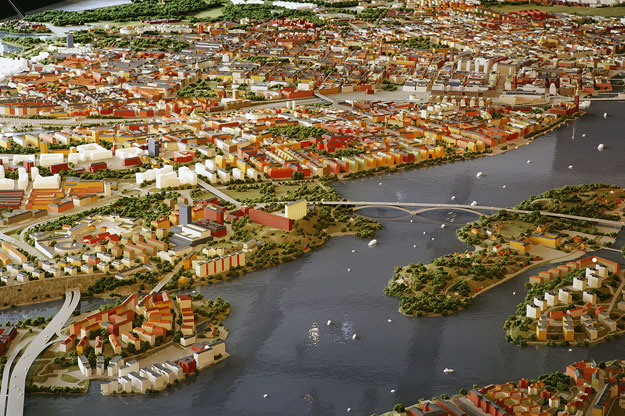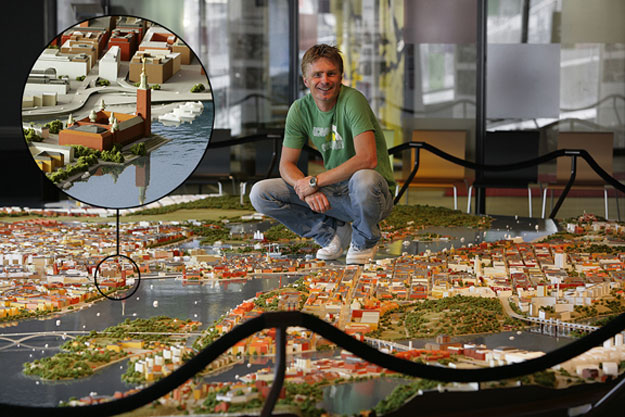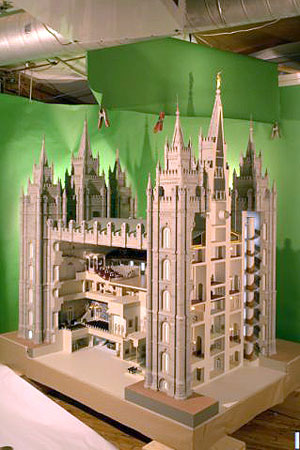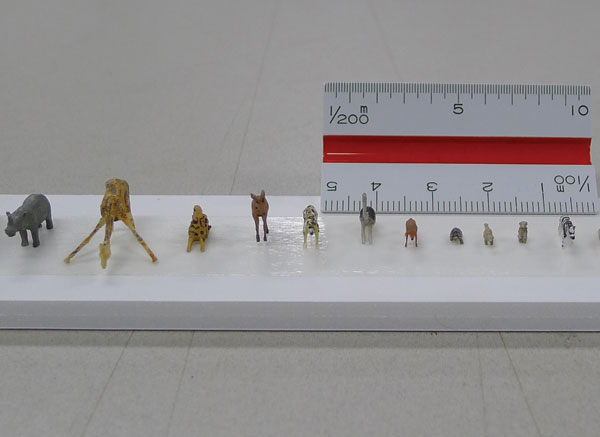Using 3D Printers to Create Architectural Models
Using 3D Printed Models as Design Tools
With an understanding of the workings of 3D printers, including the range and capabilities of the materials used, design firms can take advantage of this technology throughout the design process. Many firms have been constructing 3D study models by hand for years and find it to be a useful way to analyze and assess designs. They are also extremely useful for communicating design concepts among the design team, to clients, or to building occupants. The down side has often been the amount of time required to build the models, not to mention the studio space required to do the work, the materials needed, and the varying skills of those making the models. 3D printers overcome all of those shortfalls while retaining the benefits of having a tangible, 3D model in place to look at, touch, assess, and communicate with. Many firms that have brought 3D printers in house have experienced dramatic time savings by as much as 50 to 80 percent compared to building models by hand. That usually translates into comparable cost savings on the order of 40 to 75 percent, leaving more hours to spend on providing other services. It also means that it is economical to produce multiple models, particularly when changes are anticipated or needed as the design develops. Since the machines are fairly compact as are the printing materials, they take up far less space than a full modeling studio. Further, the quality of the output is much more consistent based on the precision of the CAD files and printing software.


Photos courtesy of Stratasys, Ltd.
Large, detailed models can be created to scale for display purposes. Mitekgruppen (Mitekgroup), a Swedish design firm hired to create a 3D model of the city of Stockholm, Sweden, completed the project in a fraction of the normal time by using a 3D printer and Google Earth.
Note that physical models have never been used in place of design and construction drawings, but as a supplemental design and communication tool. In this era of building information modeling, where a building is built virtually from computerized intelligent components in three dimensions, physical models are still a supplemental tool. While BIM may be the ultimate basis for designing and constructing the building, not everyone will relate to the images on a computer screen or 2D printed output the same way as a 3D physical model. The tangible and tactile nature of the model offers a different way to experience the design that is usually easier for clients and the public to understand and interface with. It is also a useful tool for the design team who can readily observe aspects of the design on a physical model while addressing other items in a computerized model.
With all of the above in mind, designers and firms can benefit from 3D printing at each stage of the design process.
Conceptual or Early Design
Early in the design process, it is common to use quick study models to assess building massing or analyze forms. Often those studies are done in the context of the building site. Hence, it is possible to use 3D printing to first model the area surrounding a project site, perhaps using available computerized information from Google Earth or GIS software. From there, different study models can be placed in the contextual model and be readily assessed. For projects that involve renovations or additions to existing buildings, CAD files that may already exist for the building can be used as the basis to print the current conditions. These contextual models can then be used in conjunction with CAD or BIM generated designs to help assess and analyze different options. From there, selected designs can be chosen to be printed and placed in the contextual model for further review.

Image courtesy of Stratasys, Ltd.
3D printers can be used to work on existing buildings such as the Salt Lake Temple in Salt Lake City, Utah, shown above.
Since conceptual models at this stage of the design may be simpler and less detailed than later on, small desktop 3D printers may be appropriate to use to produce small-scale study models. The material used may be a simpler, opaque plastic in a single color to help with massing and form evaluation.
Detailed Design
As an architectural design develops, whether for a new building, a renovation of an existing building, or for a multi-building complex, the focus often moves to the design of specific building areas or coordination of different building systems. Here, 3D printers can be used to create models of selected areas at a larger scale for more detailed scrutiny. For example specific areas or details can be 3D printed for coordination and avoidance of conflicts between building systems (structure, HVAC, architectural, etc.) but also for determination of meeting overall design goals. It is also quite possible to print out full interior or exterior details for things like window and door treatments, specialty construction, or complex design elements.

Image courtesy of Stratasys, Ltd.
Small custom pieces can be produced with great precision on a 3D printer for use in models or even for use in a constructed building.
If custom-designed components are being investigated, the 3D printer may prove to be very valuable, just as it is in designing and prototyping manufactured parts for other industries. To prove a particular design, a functional precision prototype can be made on the 3D printer, perhaps with full-size or half-size sections if the custom component is not too large. The printed parts can then be assessed for performance and engineering qualities in addition to other design criteria. Producing a functional prototype in this manner typically takes from a few hours to overnight. The significance is that it can allow for flaws to be caught before they become costly fabrication changes. In this way, the model is not only a design representation, but it may become part of the basis for fabrication as a design mock-up or prototype.
In some cases, if plastic components are appropriate for use in the constructed building, it may be worth directly printing the needed number (assuming a manageable quantity) and providing them to the contractor for installation. This may apply to select custom decorative features for example where a code acceptable plastic can be used. It may also apply to certain functional custom elements. The benefit is that small custom elements which might have been particularly costly to produce or fabricate, can now be incorporated very economically. This is enhanced if the design calls for variations of the component, since each piece can be revised or customized as needed without any significant cost change.
Final Design and Detailed Presentation
Once a design is finalized, there can be the need for a final, updated, presentation model. That model may be used for fundraising purposes, for leasing purposes, or simply to communicate the vision of the project while construction takes place over any number of months or years. In these cases, updated sections can be printed in the preferred level of detail and pieced together to create the whole. Depending on the printing process used, different features, details, colors, and materials can be readily incorporated. The level of detail available allows for accurate scale models to show specific architectural components such as surface textures and railings. Large models printed in sections can be bonded together with a wide range of epoxies or solvents so the completed model looks as if it were printed as one piece. If the finished model is expected to be on display, it can be printed using durable materials selected to withstand damage from sunlight, touching, etc.
Part of the beauty of using a 3D printer for models all through the design process is that the model can progress alongside the design. This is particularly true when the model is created in sections or segments that can be swapped out. The contextual model will likely stay the same, but different sections of the new or renovated building may change and need to be replaced. Since the 3D printer relies on CAD files which can usually be very easy to revise, a revised model portion can be equally easy to print out. Further, some projects require a model that allows for each floor of a multi-story building to be looked at. The model can be printed by floor and stacked up to show the whole building, and then opened up for viewing by unstacking the sections. If a particular floor changes, but the others don't, then just that one floor needs to be reprinted and inserted.









